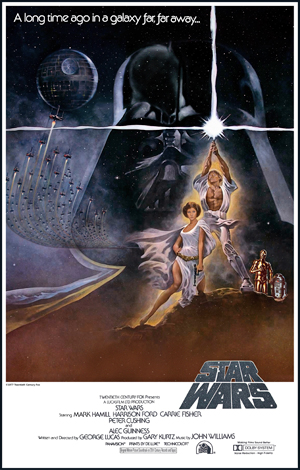
Source: StarWarsMoviePoster1977,
Wikimedia
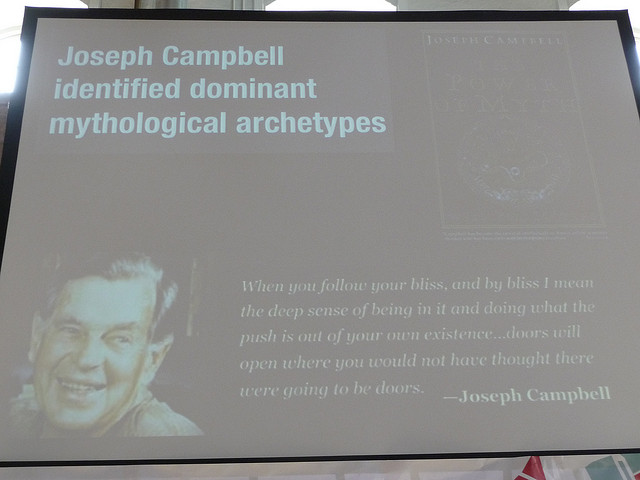
Source: Joseph Campbell, Ton Z, Flickr
Jung identified many character archetypes, but it isn’t necessary to be able to identify them all when studying a story, play, or movie. Joseph Campbell, who is famous for studying the myths found in different cultures, identified several character archetypes that appear in most fiction and drama. A movie series you might be familiar with, Star Wars, has many examples of character archetypes. In fact, writer/director George Lucas consulted with Joseph Campbell when he made the first Star Wars movie (now known as Star Wars Episode IV: A New Hope). Character archetypes work with plot archetypes to advance the story in many plays and movies. Character archetypes can be people, objects, animals, or situations. Some common character archetypes follow.
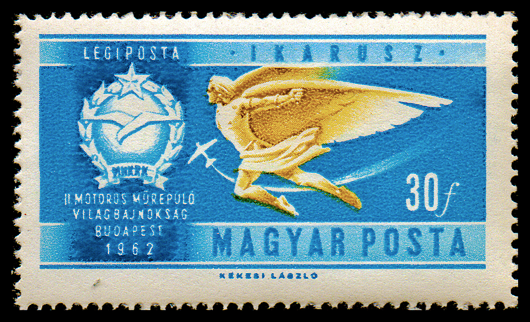
Source: C210 Desings 30, Darjac, Wikimedia
Hero/Heroine
The hero or heroine is the central character. This character goes on a journey that changes him or her by the end of the story. The journey is sometimes physical, as in physically moving through space and time, and sometimes mental. Often, it is both. In the Star Wars series, Luke Skywalker embarks on a journey, joining a group of rebels in order to defeat the Empire in a galactic civil war. He starts out as a bored farm boy and becomes a Jedi warrior who travels through the galaxy and destroys the Death Star. The hero character has a strength, power, or weapon that makes him special. For example, Luke Skywalker has his light saber and the Force. Another familiar hero, Harry Potter, is the only wizard ever to have survived being attacked by Lord Voldemort.
A variant on the hero or heroine is the tragic hero. A tragic hero has a tragic flaw that causes his or her downfall. In the Greek myth of Icarus, Icarus tries to escape from Crete by flying with wings made of feathers and wax. His father, Daedalus, warns him not to fly too close to the sun. Icarus ignores his father’s warning, and his wings melt, causing him to fall into the sea and drown. Icarus’ tragic flaw is hubris, or excessive pride and arrogance. He thinks he knows more than his father, and this leads to his undoing. Examples of the tragic hero can be found in Greek and Roman myths and plays such as Hamlet, Macbeth, and Oedipus Rex.
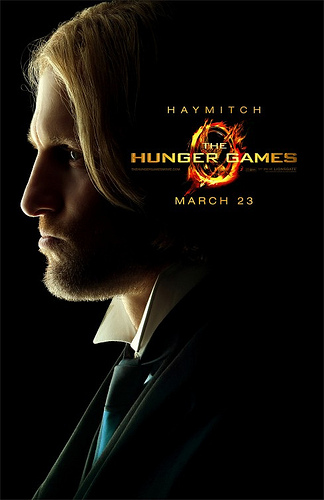
Source: 5 The Hunger Games
Haymitch, Cinema per tutti, Flickr
Mentor
The mentor is a wise old man or woman who guides the hero’s journey. In the Star Wars series, Obi Wan Kenobi and Yoda are Luke’s mentors. In the Harry Potter series, Professor Dumbledore is Harry’s mentor, and in the book The Hunger Games, Haymitch is Katniss’s mentor.
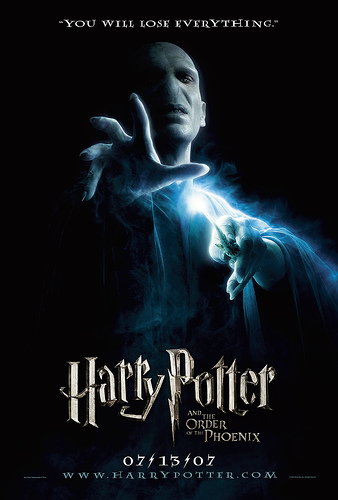
Source: VOLDEMORT, Joel,
Carela Photogrpahy, Flickr
The Shadow
The shadow is the force of evil. This character is often the villain character, but occasionally it is also “the enemy within” or the dark side of the hero character. In the Star Wars series, the shadow is Darth Vader. In the Harry Potter series, Lord Voldemort is the shadow.
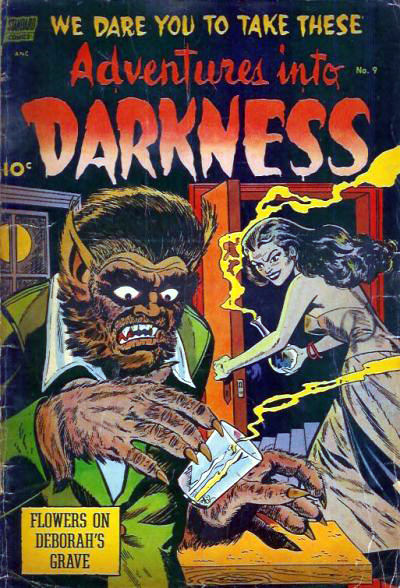
AdventuresIntoDarkness0901,
Atomicsteve, Wikimedia
Shape-shifter
This character seems to be one thing but ends up being something else. In a very literal sense, vampires and werewolves are shape-shifters. They seem to be regular people, but are, in fact, monsters. In a figurative sense, these are characters who seem like enemies but are actually friends or they are characters who seem like friends but are actually enemies. In the Star Wars series, the shape-shifter is Han Solo. In the beginning, we know that he’s simply interested in earning money, but as the story unfolds, Han Solo is a true ally to Luke.

Source: I will search Google before asking dumb questions,
AJC 1, Flickr
Trickster
This character lessens the tension in the story, play, or movie, often by making us laugh. Tricksters sometimes act like pranksters, but they are smart enough to beat seemingly smarter opponents. In the Star Wars series, C3PO is the trickster, and in Harry Potter series, the Weasley twins are the tricksters. Another example of the trickster is the Joker, Batman's unpredictable foe whose pranks are not always harmless.
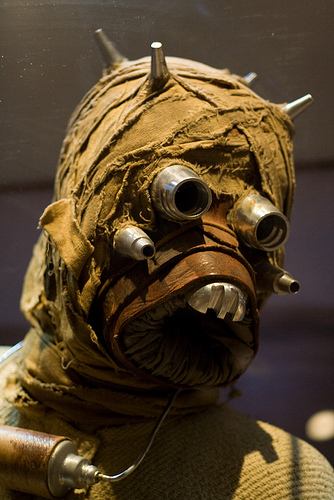
Source: IMG_0534, billrdio, Flickr
The Threshold Guardian
The threshold guardian tests the hero with an obstacle that the hero must overcome before setting out on the quest. The threshold guardian is protecting the special world the hero wants to enter. The threshold guardian can be a person, a locked door, a spell that needs to be broken, etc. In the Star Wars series, the Sand People are the threshold guardians. Once Luke defeats them and rescues the droids, his real adventure begins. In the Harry Potter series, Harry’s aunt and uncle are the threshold guardians who try to keep him from attending Hogwarts.
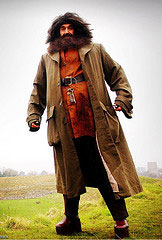
Source: Hagrid lookalike and impersonator -
Edmond Wells, Edmond Wells, Flickr
The Herald
The herald can be a person, animal, object, or situation. In the Harry Potter series, the letters invite Harry to attend Hogwarts. When the letters aren’t answered, Hagrid goes to Harry to reiterate the invitation to Hogwarts.
Let’s see if you can figure out the archetype for each of the following characters from The Wizard of Oz. Drag and drop each character from the left-hand column to an archetype in the right-hand column.

In the next section, we will discuss the journey of the hero or heroine and how archetypal characters work within this type of plot.